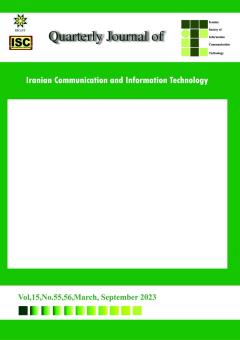Valuation of digital services in Iran: Empirical proof for Google and Instagram
Subject Areas : ICTFARHAD ASGHARI ESTIAR 1 , AMIR MOHAMMADZADEH 2 * , Ebrahim Abbasi 3
1 -
2 - PROFESSOR
3 - Department of management, faculty of social sciences and economics, Alzahra University, Tehran, Iran
Keywords: digital platform, free goods, valuation, covid-19, intangible assets,
Abstract :
This article surveys the fundamental value of digital platforms, such as Instagram and Google. Despite the commutable nature of digital technologies, it is challenging to value digital services, given that the usage is free of charge. Applying the methodology of discrete choice experiments, we estimated the value of digital free goods. For the first time in the literature, we obtained data for the willingness-to-pay and willingness-to-accept, together with socio-economic variables. The customer’s valuation of free digital services is on average, for Google, 4.9m Rial per week and Instagram, 3.27. This paper corroborates that Instagram and Google have an intrinsic value to users, despite the fact that the service of the digital platforms is free of charge. This is the beginning of the valuation of free services such as Shad, Rubika, Zarebeen, etc. in Iran, which has played a significant role in the communication industry since the beginning of the Covid-19 pandemic, and in the discussion of the national information network, the market value of the provider companies will be very important.
ف رایلی، رابرت (1399).راهنمای ارزشگذاری داراییهای نامشهود. مینویی، مهرزاد؛ مالکی، سارا. تهران، انتشارات گپ
حمیدی، مهدی؛ بهاره نبوی و سیدعلی حسینی (۱۳۹۳). مدلهای ارزش گذاری و قیمت گذاری فناوری: ارائه دسته بندی جامع، دومین کنفرانس بین المللی تجاری سازی فناوری، تهران، پارک علم و فناوری دانشگاه تهران
رفیعیان، مجتبی؛ رها پولادی و رضا سرداری (۱۳۸۷). معرفی رویکرد تمایل به پرداخت WTPو کاربرد آن در پایدارسازی منابع مالی شهرداریها، اولین همایش مالیه شهرداری، مشکلات و راهکارها، تهران، مرکز مطالعات تکنولوژی دانشگاه صنعتی شریف
مولایی، فاطمه (۱۳۹۱). مطالعه شیوههای قیمتگذاری فناوری. فصلنامه پژوهشی آموزشی پژوهشگاه پتروشیمی ایران، دوره 2، شماره 2، 59-65
میرسعیدقاضی، صادقی، معصومه.(1400). طاهره ارائه مدل ارزیابی محتوای الکترونیکی بومی در کشور مبتنی بر زنجیره ارزش. فصلنامه فن آوری اطلاعات و ارتباطات. شماره 49 دوره 13.
Anderson, C. (2008). Free! Why $0.00 Is the Future of Business. Wired, 16.03.
Anderson, C. (2009). Free: The future of a radical price. Random House.
Becker, G. M., DeGroot, M. H., & Marschak, J. (1964). Measuring utility by a single‐response sequential method. Behavioral science, 9(3), 226-232.
Brynjolfsson, E., & McAfee, A. (2014). The second machine age: Work, progress, and prosperity in a time of brilliant technologies. WW Norton & Company.
Brynjolfsson, E., & Saunders, A. (2009). What the GDP gets wrong (why managers should care). MIT Sloan Management Review, 51(1), 95.
Brynjolfsson, E., Eggers, F., & Gannamaneni, A. (2018). Using massive online choice experiments to measure changes in well-being (No. w24514). National Bureau of Economic Research.
Bodo, Herzog, valuation of digital platform, (2018), International jounal of financial studies
Carson, R. T., & Groves, T. (2007). Incentive and informational properties of preference questions. Environmental and resource economics, 37(1), 181-210.
Carson, R. T., Groves, T., & List, J. A. (2014). Consequentiality: A theoretical and experimental exploration of a single binary choice. Journal of the Association of Environmental and Resource Economists, 1(1/2), 171-207.
Edelman, B. (2009). Priced and unpriced online markets. Journal of Economic Perspectives, 23(3), 21-36.
Evans, D. S. (2013). Attention rivalry among online platforms. Journal of Competition Law & Economics, 9(2), 313-357.
Gal, M., & Rubinfeld, D. L. (2016). The hidden costs of free goods: Implications for antitrust enforcement. Antitrust Law Journal, 80(401), 14-44.
Goldin, K. D. (1977). Equal access vs. selective access: a critique of public goods theory. Public Choice, 29(1), 53-71.
Greenstein, S., & McDevitt, R. C. (2011). The broadband bonus: Estimating broadband Internet's economic value. Telecommunications Policy, 35(7), 617-632.
Herzog, B. (2018). Valuation of digital platforms: experimental evidence for Google and Facebook. International Journal of Financial Studies, 6(4), 87.
Louviere, J. J., Hensher, D. A., & Swait, J. D. (2000). Stated choice methods: analysis and applications. Cambridge university press.
Miller, K. M., Hofstetter, R., Krohmer, H., & Zhang, Z. J. (2011). How should consumers' willingness to pay be measured? An empirical comparison of state-of-the-art approaches. Journal of Marketing Research, 48(1), 172-184.
Moro visconti, Roberto (2020). The Valuation of Digital Intangibles: Technology, Marketing and Internet. 10.1007/978-3-030-36918-7.
Musgrave, R. A. (1959). Theory of public finance; a study in public economy.
Rao, V. R. (2014). Applied conjoint analysis (p. 389). New York, NY: Springer.
Rochet, Jean-Charles, and Jean Tirole. 2006. Two-Sided Markets. Rand Journal of Economics 37: 645–67.
Rysman, Marc. 2009. The Economics of Two-Sided Markets. Journal of Economic Perspectives 23: 125–43.
Samuelson, Paul A. 1954. The Theory of Public Expenditure. Review of Economics and Statistics 26: 386–89.
Statista. 2019. Available online: https://de.statista.com/ (accessed on May 2020).
Tirole, Jean. 2017. Economics for the Common Good. Princeton: Princeton University Press.
Tucker, C. (2010). The economics value of online customer data. Background Paper, 1.
Von Hippel, E. (2001). Innovation by user communities: Learning from open-source software. MIT Sloan management review, 42(4), 82-82

